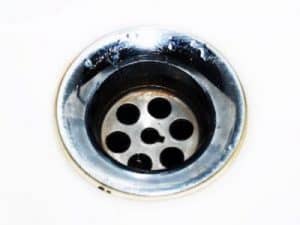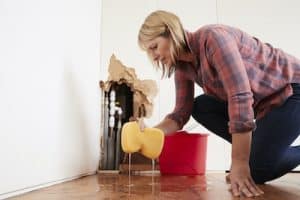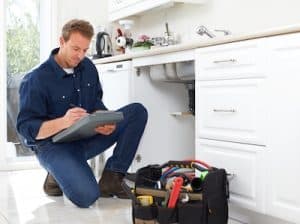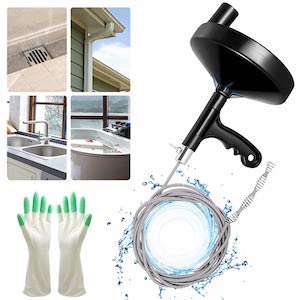10 Reasons to Call an Emergency Plumber
Plumbing emergencies are one of the most frustrating aspects of owning a property. Not only do they cause quite an inconvenience but they also have the ability to wreak havoc to the structural aspects of your home! Many people suffer plumbing emergencies late at night, early in the morning, or over the weekend when many plumbing companies do not offer service calls.
What is a plumbing emergency? Many plumbing emergencies such as a clogged drain or toilet overflow can be addressed with the help of household tools. However, other emergencies involving leaks, or sewer backups require the assistance of a qualified plumber!
Keep reading to learn about the 10 most common types of plumbing emergencies where you might need the help of a reliable local plumber as well as how to address the issue effectively.
10 Plumbing Emergencies that Require a Plumber
If you are experiencing a plumbing emergency, it can be hard to know whether it is worth it to pay for an emergency plumbing service call. While plumbers often charge extra for emergency calls, in some cases, it may be the only option! Here are some guidelines on how to deal with some of the most common plumbing emergencies.

1. A clogged drain that can’t cleared with an auger.
There are not many things more frustrating than a clogged drain. A clog in your sink or shower drain can be a hassle to unclog. There are many things that can cause your drains to clog. However, the most common culprit is hair loss from humans or pets.
Before you call a plumber to unclog your drain, first attempt a few at-home solutions. From chemical drain cleaners to using a sink plunger or a sink drain auger, you may be able to save yourself the expense of a visit from your plumber.
If you have tried everything and can’t get your drain to function properly, it is wise to contact a qualified plumber to address the clogged drains.
 2. An overflowing toilet, that can’t be plunged.
2. An overflowing toilet, that can’t be plunged.
The dreaded toilet overflow. Often following a clog in your toilet, this common plumbing emergency not only causes a mess but can also cause serious damage to the flooring of your home.
If your toilet begins to overflow, the first step is to turn off the toilets’ water supply. Most toilets feature a supply line near the bottom side of the toilet. This line should have a valve. Turn the valve counterclockwise to stop the flow of water to the toilet.
Next, remove the tank cover. Lift the float cup or float ball high enough so that the toilet water stops running. If the water continues to run, turn off the water supply to the house.
The water supply to your home is typically a valve or knob that is located in the basement or near the water heater. Turn this knob or valve until the water stops running. Shutting off the water supply to your home eliminates the immediate problem of the flowing water if it is caused by a clog rather than a sewer backup. Using a toilet plunger will help eliminate the clog.
![]() Use a small cup or a bucket to remove any excess water at the brim of the bowl. Pour the water into a sink (if the water is clean) or a plastic bucket (if the water is dirty).
Use a small cup or a bucket to remove any excess water at the brim of the bowl. Pour the water into a sink (if the water is clean) or a plastic bucket (if the water is dirty).
Once the cause of the overflow has been remedied, and the water is back on, pour the dirty water back into the toilet and flush it again for safe disposal.
If you cannot find the cause of the overflow, or cannot quickly remedy the situation, contact a qualified plumber. It is important that you act quickly to prevent further damage to your home or business.

3. A burst pipe or water leak.
A burst piper or water leak can quickly wreak havoc on your home or business. Leaks lead to many types of damage including mold, mildew, wood rot, and much more. Contact an emergency plumber immediately after discovering a water leak to prevent any long-lasting damages to your property or your wallet.
Many people believe they have water leaks from their kitchen sink or around their bathtub simply because they notice water on the floor. While this may be caused by a leak, it could also be caused by splashing or spills. Wipe up the water and carefully observe the area to see if the water returns.
Another problem that is commonly mistaken for a water leak is condensation that gathers around the toilet in the warmer summer months. Wipe down the toilet first before assuming that a leak is a culprit. Doing this before contacting a plumber can save you both money and embarrassment.
You can read more about the problems caused by water damage here.
4. No Hot Water
When the water just won’t get hot, you may have a problem with your water heater. There are two main types of water heaters: gas and electric. If you don’t know which type of water heater you have, you can check the unit for a few wires leading into a small module on the side. If you notice wires, you will know that you have an electric water heater.
If your water heater is gas-powered, it will have a small module with a pipe or hose leading into it. Once you have ascertained that information, you can start troubleshooting.
To restore hot water to your home, you may just need to adjust the thermostat with the knob on the heater itself. This is a simple fix that can be easily overlooked. Other things to look for are displaced wires or a disconnected gas line.
If you have attempted to adjust the thermostat and checked for any loose wires or gas lines, you may have a problem with the heating element of the water heater. This is a much harder problem to find and fix. Hiring an HVAC technician or plumber will likely save you great frustration and unnecessary spending if you suspect an issue with your water heater.
5. Loss of Water Pressure
There are many things that can cause a loss of water pressure. When you don’t have proper water pressure, you are unable to run the washing machine, clean your dishes, or even bathe properly! Save yourself time and frustration by contacting a technician to address your water pressure issues.

6. Sewer Backups
If you are seeing the signs of a sewer backup, you have a serious plumbing issue on your hands. Your drains are all running slowly, despite your best efforts to clear them. If you’ve tried all of the DIY unclogging tips and you still can’t seem to find a fix, it’s likely caused by a blockage is in your sewer line.
One way you can mitigate this situation without needing to call a plumber is to turn off the water at the main supply (or street level). Survey your yard, basement, or roof, and see if you can find your sewer cleanout line.
The sewer cleanout line is usually a short, white pipe about 3 to 4 inches in diameter and sealed with a screw-on cap. Once you’ve identified the cleanout line, remove the cap. This should release the pressure in the sewer line and force any water that has backed up into your home to drain.
However, if you try to release the pressure in the sewer line without any remedy to the situation, or if you simply do not want to mess with such a dirty job, you can always contact your local plumber to address the issue.
7. DIY Gone Wrong
DIY projects always seem like a great way to learn new skills and save some money in the process. However, many people attempting DIY plumbing projects actually end up spending more money in the long run.
Most plumbing work is much more complex than it may seem. Missing a step in the process or overlooking a necessary fix can cause great damage to your home!
Save yourself the frustration and unnecessary spending! Call an emergency plumbing technician to solve your latest plumbing woes before experiencing a DIY mishap. Doing so will save you both time and money!
If you have already attempted a DIY plumbing project that didn’t quite work out, contact a qualified home inspector to check on your project. This could prevent a future plumbing disaster.
8. Dishwasher Leaks
If your dishwasher is leaking because it has overflowed, the water inlet valve may be the cause. The water inlet valve feeds the water from your home’s water line into the dishwasher. If this valve is defective or damaged, water can leak out of your dishwasher.
In addition to a leak, this also means your dishes may not be cleaned correctly, so it’s important that it’s working properly.
To check to see if a water inlet valve is leaking, remove the bottom plate on the front of your dishwasher (where the water inlet valve is commonly located) and check the water valve. A leak will usually be a slow drip coming from the top of the valve.
Look for any hard water material or corrosion on the valve itself. If you identify that the water valve is leaking, shut off the water supply and replace the valve as soon as possible. You may consider hiring a professional technician for this task as it can quickly become confusing.
9. Washing Machine Leaks
There are a few different reasons that your washing machine leaks during the draining cycle. However, two very small but integral parts are usually to blame: hoses and o-rings.
Several large drain hoses connect the tub to the pump and the pump to the external drain. These connection points often begin to leak over time as hoses lose their elasticity or clamps loosen. The hoses sometimes become brittle with age and subject to splits or holes.
Telltale drips, leaks, and water puddles underneath the hoses point to the problem. Also, check the o-rings in the connections on either end of the hose. Between the hoses and o-rings, you will often identify the cause of leaks quickly. Both of these issues are relatively easy to fix, even for a homeowner with little plumbing experience.
It is easiest to clean water caused by leaks in your washing machine using a wet-dry vac.
 10. Gas Line Repairs
10. Gas Line Repairs
Many people forget that plumbers are able to repair gas service problems and not just water lines. If you have detected a leak in your gas line, contact an emergency plumber to fix your gas leak before it leads to anything more dangerous. A gas leak can cause damage to both your physical health and the condition of your home.
There are a few different places you may find gas lines within your home. We have already covered the water heater. The kitchen, however, is one of the most common places to experience a gas leak. Gas lines in the oven and/or stove are used quite a bit. Because of this, they can quickly become clogged from mineral buildup. If your house has a gas fireplace, it is also possible to experience a gas leak there as well.
The same issues apply to the gas lines leading to the fireplace. However, you must also watch out for the thermocouple getting covered in char and gunk. This can cause issues with the gas line and keep your fireplace from lighting up when you want to warm up in the winter.

When should I call a plumber?
One of the biggest mistakes you can make when experiencing plumbing emergencies is waiting too long to contact a professional. While there is something to be said for attempting DIY fixes, there are some situations that require additional assistance.
Waiting too long to contact a professional can result in serious water damage to your home. This, in turn, can pose a health risk to both you and your family in the form of mold, mildew, and other related issues.
However, contacting a plumber may result in a high service fee. This is especially true in emergency situations! As a general rule, you should contact an emergency plumbing technician anytime you experience a water leak, gas leak, or stubborn clog.
The potential charge for services will always cost less than extensive home repairs due to damages. Dealing with plumbing emergencies is stressful, frustrating, and inconvenient. However, by working with a professional, you can ensure that the problem is solved effectively and efficiently each time.
Having an Emergency Kit can be a helpful:
Find more home tips from experts here!
Related Questions
What do I do if my garbage disposal isn’t working?
If the garbage disposal of your kitchen sink appears to be broken, you may be tempted to immediately contact a plumber. However, there are a few steps you can take that may save you from paying a service fee.
First, use a wooden spoon or dowel to make sure that there is nothing blocking the disposal. Never use your hand as this can lead to serious injury! Next, find the turnkey that came with your disposal. At the bottom of your disposal, you will find a hole in which you can insert the key. Turn the key both clockwise and counterclockwise to rotate the disposal blades.
Finally, check the reset button located on the bottom of your garbage disposal. If the button is out, push it down for 30 to 40 seconds then try to turn on the disposal. Rotate the key a few more times. If, however, the reset button is still in the ‘on’ position, you may need to replace your disposal due to motor failure.
If you are unable to reset your garbage disposal, you may need to contact a professional plumber to address the issue. Avoid using the sink until the disposal issue is resolved.



